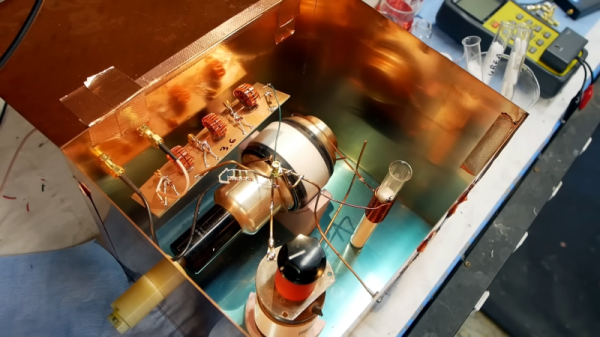You probably do not need us to tell you that Arsenic is not healthy stuff. This wasn’t always such common knowledge, as for a time in the 19th century a chemical variously known as Paris or Emerald Green, but known to chemists as copper(II) acetoarsenite was a very popular green pigment. While this pigment is obviously not deadly on-contact, given that it’s taken 200 years to raise the alarm about these books (and it used to be used in candy (!)), arsenic is really not something you want in your system. Libraries around the world have been quarantining vintage green books ̶f̶o̶r̶ ̶f̶e̶a̶r̶ ̶b̶i̶b̶l̶i̶o̶p̶h̶i̶l̶i̶es ̶m̶i̶g̶h̶t̶ ̶b̶e̶ ̶t̶e̶m̶p̶t̶e̶d̶ ̶t̶o̶ ̶l̶i̶c̶k̶ ̶t̶h̶e̶m̶ out of an abundance of caution, but researchers at The University of St. Andrews have found a cheaper method to detect the poison pigment than XRF or Raman Spectroscopy previously employed.
The hack is simple, and in retrospect, rather obvious: using a a hand-held vis-IR spectrometer normally used by geologists for mineral ID, they analyzed the spectrum of the compound on book covers. (As an aside, Emerald Green is similar in both arsenic content and color to the mineral conichalcite, which you also should not lick.) The striking green colour obviously has a strong response in the green range of the spectrum, but other green pigments can as well. A second band in the near-infrared clinches the identification.
A custom solution was then developed, which sadly does not seem to have been documented as of yet. From the press release it sounds like they are using LEDs and photodetectors for color detection in the green and IR at least, but there might be more to it, like a hacked version of common colour sensors that put filters on the photodetectors.
While toxic books will still remain under lock and key, the hope is that with quick and easy identification tens of thousands of currently-quarantined texts that use safer green pigments can be returned to circulation.
Tip of the hat to [Jamie] for the tip off, via the BBC.
















